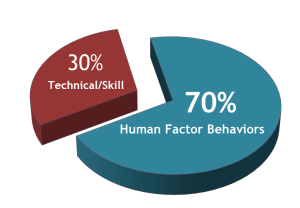
The Unpredictability of Ineffective Hiring
In the pursuit of organizational improvement and increased productivity, one crucial factor often remains in the shadows: the impact of ineffective hiring. Have you ever hired an individual who later turned out to be an underperformer? If so, you’re not alone. In reality, unless you possess exceptional interviewing skills with an uncanny ability to foresee outcomes, the odds are that this scenario occurs approximately half of the time.
Research consistently affirms that, in isolation, interviews are surprisingly unreliable in predicting job success. At best, they offer a mere 50-50 chance of making a sound hiring decision. To enhance predictability beyond this coin-flip probability, organizations turn to pre-employment testing.
Counting the Hidden Costs of Turnover
While organizations often discuss strategies for enhancing products, productivity, budgeting, and other profitability-related matters, they frequently overlook the equally critical financial repercussions of ineffective hiring. Consider a manager of organizational learning at one of our client companies who estimated the cost of salesperson turnover at roughly $70,000, encompassing both direct and indirect expenses. Similarly, turnover costs for warehouse order selectors have been estimated at a staggering $4,500 to $7,000 per employee.
Despite these substantial figures, some high-ranking managers dismiss these turnover costs as “soft” dollars, as they do not appear as line items on the budget. However, ignoring the costs of failing to hire, train, and retain quality staff is a self-deception that deserves scrutiny.
Pre-Employment Assessments: A Path to Better Hiring
Let’s delve into the various costs associated with hiring and turnover. According to the U.S. Chamber of Commerce, turning over an employee can cost anywhere from 10 to 20 times their weekly wage, particularly for entry-level positions. For mid to upper-level employees, these costs escalate further. This estimate encompasses advertising, processing, interviews, reference checks, medical exams, orientations, training, lost productivity, and impacts on other staff, making it a conservative estimate.
Furthermore, consider the cost to an organization’s productivity when the best-suited candidates for a position are not selected. The productivity gap between top-tier and subpar employees exceeds the commonly cited 10 to 30 percent. Controlled experiments consistently reveal that superior employees in a given role are two to three times more productive than their barely acceptable counterparts. Such productivity differentials span the full spectrum of job behaviors, including safety practices.
Contrary to the belief that safety and other essential job behaviors can be taught after hiring, these behaviors are innate to applicants. Relying solely on safety training films or similar approaches proves futile. The resources wasted on trying to transform individuals into something they are not through training are substantial.
Lastly, contemplate the costs incurred when supervisors must manage underperforming employees. Literature indicates that supervisors, many of whom are below-average performers themselves, dedicate a whopping 85 percent of their time to addressing the issues of the lowest-performing 15 to 20 percent of employees. Imagine the potential productivity gains if supervisors could focus their efforts on supporting and facilitating high performers instead.
Given these compelling reasons, among others, it becomes evident that hiring the right person from the outset is not only easier but also significantly less expensive. Pre-employment assessments emerge as valuable tools that can guide organizations toward achieving this goal.



